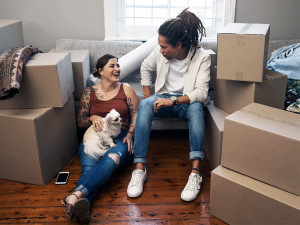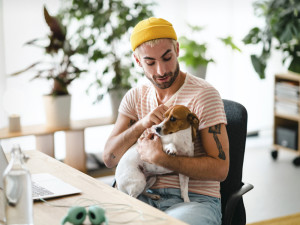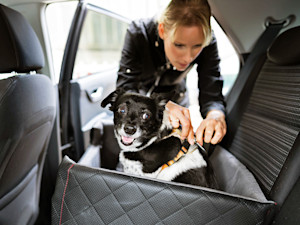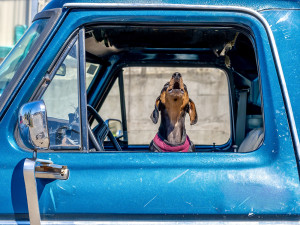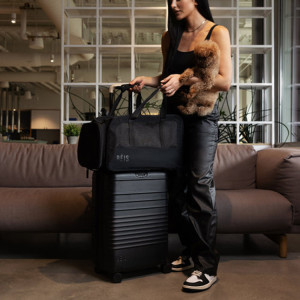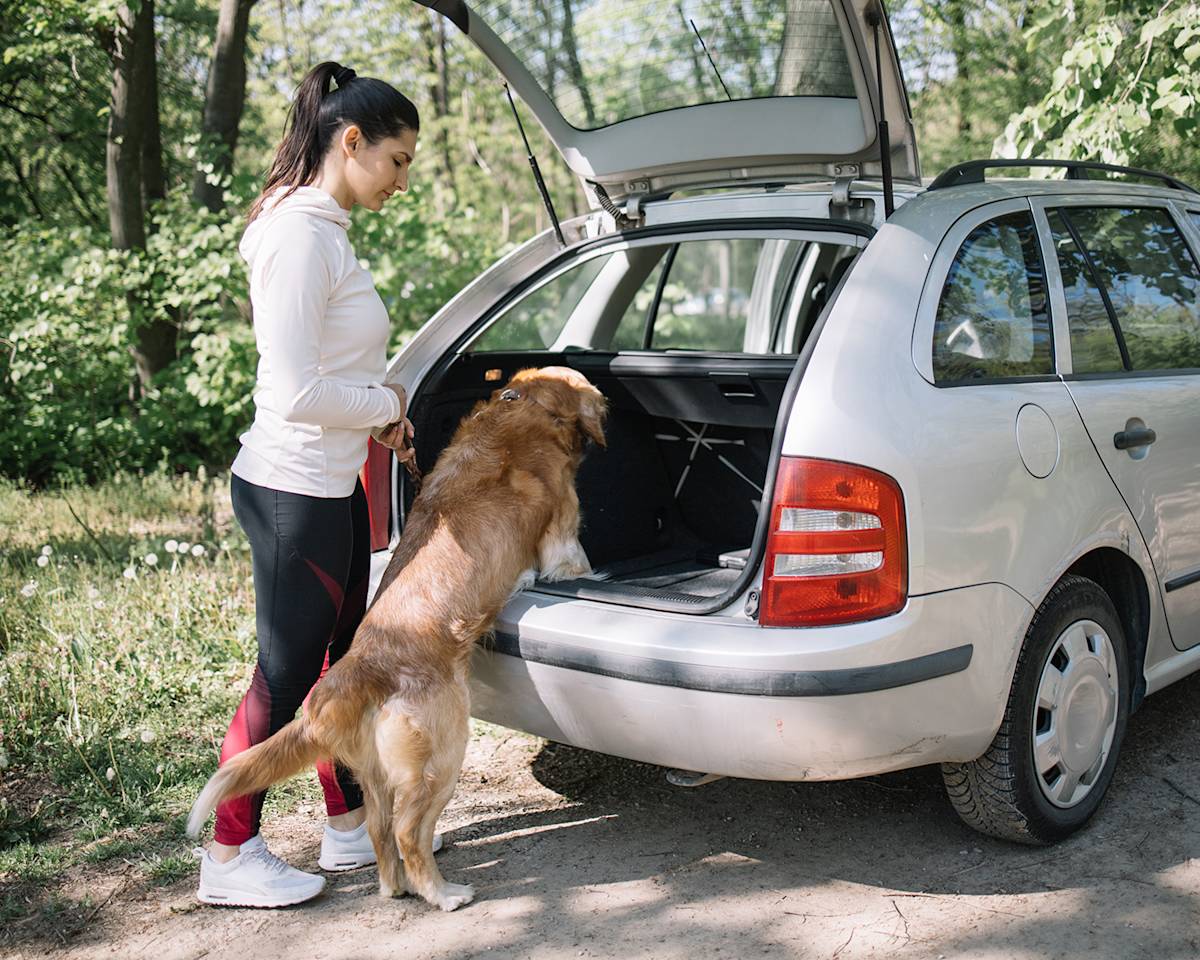
Share Article
Doing the same walk round the block gets a little tedious after a while. Not just for you but for your dog as well. Enter: the magical invention of the car.
A car is a wonderful way to show your dog the world and visit places they’d never be able to see otherwise. But it’s also a great way to cause stress and anxiety if not introduced carefully.
Whether you’re looking to make your dog’s first car journey go as smoothly as possible or are in need of some help with a dog who’s decided to put on the brakes where the car’s concerned, here’s how to help your dog fall in love with car travel.
Can I just put my dog in the car and see how they do?
While this seems like a sensible thing to do, if it goes wrong, it may leave your dog with a very negative association with the car. And that means more time and effort on your part to help rebuild their confidence.
It’s also tricky to try this approach because there’s not much you can do to comfort them while you’re driving and your dog may then be left feeling stressed for a prolonged period of time.
Why is my dog scared of the car?
“Car travel can be a daunting experience for some dogs,” explains Heather Mortley, a dog trainer and behaviour specialist from Wildshapedopens in new tab, who is registered with the ABTC as an Animal Behaviour Technician (ABT) and Animal Training Instructor (ATI).
“They can be far more sensitive to the sound and vibrations of the engine and have no control over the movement they feel. Depending on where in the car the dog is while travelling, it can also be an uncomfortable experience. Even when travelling in a crate, restrained in the back seat or boot, dogs can be jolted and jostled around, especially if they are standing or sitting while travelling.”
Worry can also be due to a previous negative experience teaching them that the car is scary. Like a car journey that involved loud noises or abrupt braking. Or if they’ve worked out that the only time they get in the car is to go somewhere they’d rather not be, such as the vets or groomers.
Don’t forget to consider motion sickness, too. Some dogs “have a history of travel sickness so they associate the car with being unsafe,” says Jo Sellers, separation anxiety specialist and owner of Pippin Pets Dog Trainingopens in new tab.
Finally, if your dog has suddenly refused to get into the car, you’ll want to explore the medical side of things. As Jo explains: “Often if a dog is reluctant to get in or out of a car, this can be very indicative of pain or discomfort.”
What should my dog wear in the car?
Before you think about going somewhere with your dog in the car, you’ll want to make sure they’re comfortably and safely strapped in.
While there isn’t a specific law in the UK, the Highway Codeopens in new tab states that dogs should be suitably restrained for car travel. That means either:
Securing them in the boot using a dog guard or crate.
Attaching a seatbelt attachment to a harness. Avoid using a collar as this can lead to neck injuries.
If your dog’s not going to be in the boot, it’s safest for them to be in the back seat. If they do need to be in the front passenger seat, you’ll need to move the seat back as far as you can and turn off the passenger airbag.
How to train them for car travel
“Time and patience is key,” says Jo. “The best training is done at their pace and to avoid car journeys for as long as is needed whilst they learn to change their feelings about the car.”
Heather advises pinpointing which part of the process your dog is struggling with so you know where to start. “Are they reluctant to get in or out, but appear to settle well once inside the car? Are they distressed only when moving? Or when you are stationary but with the engine running?” If you’re not sure, ask someone to watch your dog while you’re driving or set up a camera.
Here are the steps to follow to help your dog feel comfortable getting in the car and while you’re driving:
Get them used to being near the car with no pressure
“Play games and scentwork around the car,” Jo advises. This could involve hiding treats or toys for your dog to find. Start with the car doors closed then have them open. Finally, try it with the engine running so you start incorporating not just sight but smell and sound, too.
For dogs who are quite nervous, you may need to start doing this at a suitable distance from the car where they can relax. Gradually get closer as they become more confident. And don’t forget to reward them if they choose to investigate the car.
Encourage them into the car
When your dog’s comfortable being near the car and moving around it, it’s time to teach them to hop in. Make sure the door or boot is open and you’ve placed something comfortable inside that they’re used to such as their favourite blanket.
You can then play the same games you were playing before but start to hide the treats or toys inside the car. Don’t pressure your dog to get in by pushing them too hard. For example, you might want to start by placing a treat just inside the car on the foothold and allowing them to take it and move away.
Then you can start placing goodies further inside the car, always giving them the choice to escape if they want to.
If your dog knows a particular cue like ‘up’ to jump onto things like the sofa or bed at home, you could use it with the car. Again, don’t forget to reward them when they do jump up.
Spend more time inside the car
Now they can get inside the car, it’s tempting to just close the door and drive off. But this is where it can all go wrong.
Instead, help your dog get used to spending some time inside the car while it’s stationary. You could do this by giving them a chew or lickimat inside the car and sitting near them while they enjoy it.
Start with the door or boot open and then begin to close it, increasing the amount of time it stays shut for. If they struggle, make the duration shorter.
Start the engine
The sound and feel of the engine can be disconcerting for some dogs. When your dog’s comfortable inside the car with the door or boot closed for a good few minutes, turn the car on while they’re enjoying their chew.
If they seem stressed, turn the car off and let them out. If they’re relaxed, continue to let the engine run. You want them to be comfortable with the engine running while the car’s stationary for a few minutes before you move onto driving.
Time to drive
If possible, have someone sitting near your dog when you start to add movement in. Go for a very short, smooth and slow drive initially – even just down the road and back. If you have a driveway, you can start just by going back and forth on that.
If your dog needs some extra reinforcement, the person sitting near them can give them a treat or fuss every now and then. If they start to become stressed, go home, stop the car and let them out. Next time, make the journey shorter.
Getting out and about
Increase your car journey time and speed in line with your dog’s ability to cope. And make sure to use the car mainly for fun things like going to the park or visiting friends and family so they develop a positive association with it.
Commons problems with dogs and cars
My dog seems nauseous in the car
Motion sickness is quite commonopens in new tab in puppies and gradually helping them get used to travelling in the car can alleviate this over time. But if your dog isn’t getting better or is of an older age, speak to your vet. They can prescribe medication if needed.
Other things that can help dogs who get car sick include:
Ensuring they’re in a secure and comfortable seat.
Making sure the car is cool.
Feeding them at least a couple of hours before getting in the car.
My dog was fine in the car and now refuses to get in
If your dog has suddenly developed an aversion to the car, it’s important to get a thorough vet check. Physical discomfort and pain can lead to dogs avoiding things like the car and isn’t something you can train away.
If your vet can’t find anything physically wrong with your dog, then find an accredited behaviourist via the likes of the ABTCopens in new tab to help you work out what might be going on.
My dog’s old and struggles to get in by themselves
Again, get a vet check first and foremost if you haven’t already to make sure any medical conditions are detected and treated or managed appropriately.
“Using a dog ramp or steps can make a real difference,” Heather says. “These aids aren’t just great for older dogs or dogs with pre-existing conditions, but they can help minimise the chances of your younger dog developing joint issues in the future, too.”
Jo advises to “start using them flat and slowly to build up to the height of a car once the dog is more comfortable using them. Small dogs should be lifted in and out if possible. Or use the ramp for them too.”
I’ve tried the gradual training steps and am struggling to get anywhere
The key is to not push your dog too quickly and only move onto the next step when they’re relaxed with the current challenge.
But, as Heather says, “it is always best to consult an ethical, accredited dog behaviour specialist if you feel your dog is in distress when it comes to car journeys, rather than trying to tackle the issue on your own.” They can help you break the process down into more gradual steps, build your dog’s confidence up in alternative ways and collaborate with your vet if needed.
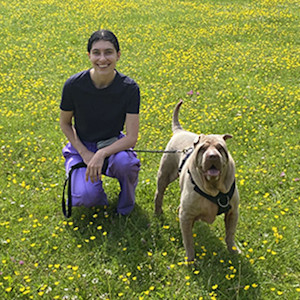
Lauren Sharkey
Lauren Sharkey is a journalist-turned-dog behaviourist who runs Winnie’s Worldopens in new tab: a training and behavioural company that aims to give dogs and their pet parents the life they deserve. She shares her life with a Shar Pei named Winston, who is the inspiration for her career change along with being her biggest love (and challenge!).
Related articles
![a woman and a man sit in an empty home surrounded by boxes with a dog]()
Moving Abroad With Your Dog? Here’s Everything You Need To Know
Moving house is stressful at the best of times, but what happens if you want to move abroad with your dog? We consulted some experts to find out
![Guy sitting with his dog at his desk at work.]()
How to Train Your Dog For a Day At the Office
Dog trainer Robert Haussmann shares his tips for how to teach your pup to be your favourite co-worker
![Dog in a car seat being strapped into the seat belt by their harness]()
How to Keep Your Dog Safe In a Car According to Experts (and the Law)
Including how to stop them jumping out the window whilst you’re driving...
![Wiener dog barking out of window of blue truck]()
Why Do Dogs Bark in the Car?
What to do when your dog barks at everything from other cars to people
![A woman standing next to a suitcase with a dog carrier on top while holding her dog.]()
The Best Dog Carriers For Planes, Trains and Automobiles
Whether you’re driving across the UK or flying internationally, your pup can comfortably tag along
![Dog seat-belted in a car]()
The Best Car Travel Gear for Dogs
All the essentials you need to hit the road with your copilot, from pet seatbelts to dog goggles

